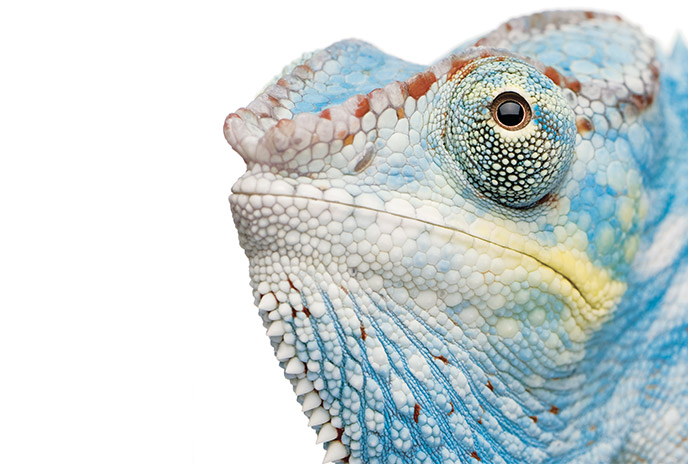Royal Commission into Institutional Responses to Child Sexual Abuse – RMIA discusses Child Safe Standards
Date: May 17, 2018
By Rosan Santangelo, Partner, HBA Legal and President, NSW Chapter RMIA 
The Risk Management Institute of Australia (RMIA) and HBA Legal are uniting RMIA’s diverse membership’s wide range of skills and disciplines to explore needs of vulnerable people. RMIA will plan sessions on risk strategy and frameworks, in light of Royal Commission recommendations.
Organisations that work with children, particularly schools, are faced with changes in society and technology which demand they constantly evolve to meet new challenges. These include the recommendations made by the Royal Commission into Institutional Responses to Child Sexual Abuse which are, in some respects, very practical and will hopefully lead to new environments which are open, friendly and safe.
The Royal Commission published its final report on 15 December 2017, setting out its findings and recommendations arising out of a five-year inquiry.
The comprehensive 17 volumes of findings are an impressive body of work and, while at first daunting to review, some common themes emerge, and interesting questions arise about risk management.
Volume 6, Making Institutions Child Safe, describes the need for a national child sexual abuse prevention strategy and proposes the implementation of Child Safe Standards, including how they should be implemented. It consists of 24 recommendations. Much like a traditional risk management analysis, the Royal Commission discussed the importance of corporate and organisational culture and core values which are recommended to be set out in a Code of Conduct. This would be specifically tailored to emphasise the importance of child safety and the responsibilities of an organisation at all levels – Board, management, staff and other stakeholders, such as family of children and vulnerable people.
Volume 6 also sets out risk management strategies focussed on preventing, identifying and mitigating risks. This touches on a number of areas including, by way of example, Standard 8 to:
- ensure that the physical environment in which children are placed is safe, monitored and, if necessary, physically modified; and
- there are recommendations that organisations be vigilant in ensuring that children are safe when engaging with online
Physical Environment
The Royal Commission found that the risk of child sexual abuse in institutional contexts can increase when an institution’s physical environment allows perpetrators to isolate children or operate without scrutiny. Perpetrators can go to some lengths to create and or take advantage of such environments, for example, in boarding schools, sick bays or while traveling (ref page 202 of Volume 6).
The forum may wish to explore issues such as how our built environment influences safety. This idea has already been explored in Crime Prevention Through Environmental Design (CPTED) theory which seeks to use knowledge and creativity to design those built environments in ways that lessen or prevent the incidence of crime. There are three main concepts behind the theory of CPTED, all of which are very relevant to the Royal Commission recommendations:
- Crimes against people and property are less likely to occur if other people are around (direct presence);
- It is important that people in adjoining buildings and spaces are able to see what is happening (indirect presence); and
- It is important to give people safe choices about where to be and how to anticipate and respond to
This is an interesting one for schools in particular which are already evolving from dark decompartmentalised places to open community spaces – light, smart, transparent. The objective is to eliminate places where one might feel scared, intimidated or harassed and to have plenty of CCTV to ensure security.
Online
The Independent Statutory Office of the eSafety Commissioner has been nominated to lead the work of supporting institutions to help prevent online child sexual abuse and respond effectively to incidents that occur. As schools and other organisations are forced to grapple with technological advancements in how their stakeholders communicate and socialise with each other, along with their own record keeping and communication with children and parents, this presents some risks and challenges. It will be interesting to see how those responsible for on-line communication and databases will meet the challenge of child protection in 2018.
The Royal Commission also made recommendations regarding:
- Cultural sensitivity;
- Recruitment;
- Education;
- Governance;
- Records management; and
- The handling of abuse
The Royal Commission has set out the following guidelines for Institutions when implementing the Child Safe Standards:
| Standard 1:
Child safety is embedded in institutional leadership, governance and culture |
a. The institution publicly commits to child safety and leaders champion a child safe culture.
b. Child safety is a shared responsibility at all levels of the institution.
c. Risk management strategies focus on preventing, identifying and mitigating risks to children.
d. Staff and volunteers comply with a code of conduct that sets clear behavioural standards towards children.
e. Staff and volunteers understand their obligations on information sharing and recordkeeping. |
| Standard 2:
Children participate in decisions affecting them and are taken seriously |
a. Children are able to express their views and are provided opportunities to participate in decisions that affect their lives.
b. The importance of friendships is recognised and support from peers is encouraged, helping children feel safe and be less isolated.
c. Children can access sexual abuse prevention programs and information.
d. Staff and volunteers are attuned to signs of harm and facilitate child-friendly ways for children to communicate and raise their concerns. |
| Standard 3:
Families and communities are informed and involved |
a. Families have the primary responsibility for the upbringing and development of their child and participate in decisions affecting their child.
b. The institution engages in open, two-way communication with families and communities about its child safety approach and relevant information is accessible.
c. Families and communities have a say in the institution’s policies and practices.
d. Families and communities are informed about the institution’s operations and governance. |
| Standard 4:
Equity is upheld and diverse needs are taken into account |
a. The institution actively anticipates children’s diverse circumstances and responds effectively to those with additional vulnerabilities.
b. All children have access to information, support and complaints processes.
c. The institution pays particular attention to the needs of Aboriginal and Torres Strait Islander children, children with disability, and children from culturally and linguistically diverse backgrounds. |
|
Standard 5: People working with children are suitable and supported |
a. Recruitment, including advertising and screening, emphasises child safety.
b. Relevant staff and volunteers have Working With Children Checks.
c. All staff and volunteers receive an appropriate induction and are aware of their child safety responsibilities, including reporting obligations. d. Supervision and people management have a child safety focus. |
|
Standard 6: Processes to respond to complaints of child sexual abuse are child focused |
a. The institution has a child-focused complaint- handling system that is understood by children, staff, volunteers and families.
b. The institution has an effective complaint-handling policy and procedure which clearly outline roles and responsibilities, approaches to dealing with different types of complaints and obligations to act and report.
c. Complaints are taken seriously, responded to promptly and thoroughly, and reporting, privacy and employment law obligations are met. |
Contact:
Rosan Santangelo, Partner
Direct: +61 (02) 9376 1144
rosan.santangelo@hbaleagal.com
Disclaimer: This article is intended for informational purposes only and should not be construed as legal advice. For any legal advice please contact us
